14 March 2016
How important is it to tackle the question of the “end” in current artistic practice? This is the query that the Polish artist Goshka Macuga, a Londoner by adoption, has chosen to investigate in the exhibition at the Fondazione Prada called To the Son of Man Who Ate the Scroll, a title that refers to a verse from the Biblical book of Ezekiel. Here Macuga explores such “lofty” themes as the origin, the end, rebirth, time and our heritage of knowledge, and she does so by means of a now well-established method: she maps everything that interests her and orchestrates the results in a many-voiced production in which she also takes on the roles of researcher, collector of other people’s works and curator. The exhibition is laid out along a route that starts from the Podium and then leads to the Renaissance Studiolo in the South Gallery and to the Cisterna: the journey begins in the large glazed space on the ground floor, strewn with pieces of large dimensions that evoke ideas of the cosmos, including one of Lucio Fontana’s Spatial Concepts, Eliseo Mattiacci’s Colpo di Gong and an enormous golden sphere by James Lee Byars. The only animated presence is an android seated on a platform (created by Macuga in collaboration with A-Lab), an orator that reels off without a break snatches of speeches given by a diverse range of historical figures—from Gorbachev to Hannah Arendt, from Nietzsche to Roy Batty of Blade Runner—that evoke scenarios of apocalypse. On the second floor, Claudio Parmiggiani’s La salita della memoria introduces the visitor to five tables with scrolls of paper about ten meters in length on which another automaton—constructed by the French artist Patrick Tresset—has made drawings, written texts and produced mathematical formulae and diagrams that recount the progress of humanity. The destiny of the world is left open on the sixth table, where a robot traces indecipherable signs before the eyes of the public. The Studiolo too speaks of incommunicability, with the reading of texts in Esperanto, a symbol of the failure of the utopian idea of creating a common language and culture. A change of tone takes place in the three rooms of the Cisterna, in which hope is entrusted to 73 bronze heads of thinkers and historical figures linked together like the atoms of a molecule, evoking Einstein’s proposal that the political leadership be replaced by an intellectual one. As if to suggest that only we can be the key to our salvation, as well as to our destruction.
Goshka Macuga: To the Son of Man Who Ate the Scroll
Curated by Goshka Macuga
Fondazione Prada, Milan
February 4-June 19
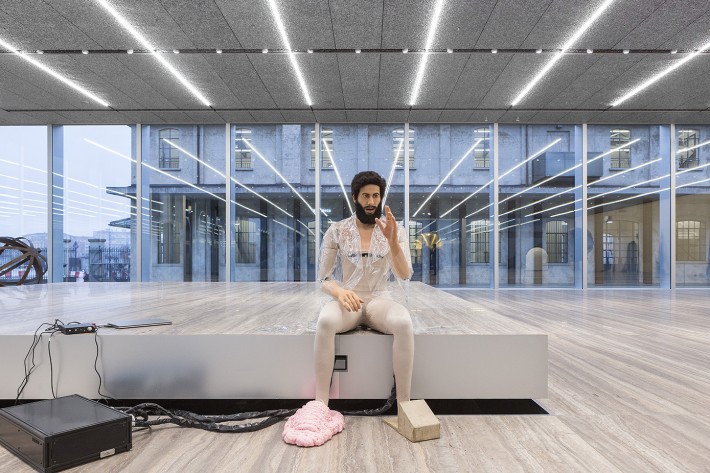
Goshka Macuga, To the Son of Man Who Ate the Scroll, 2016.
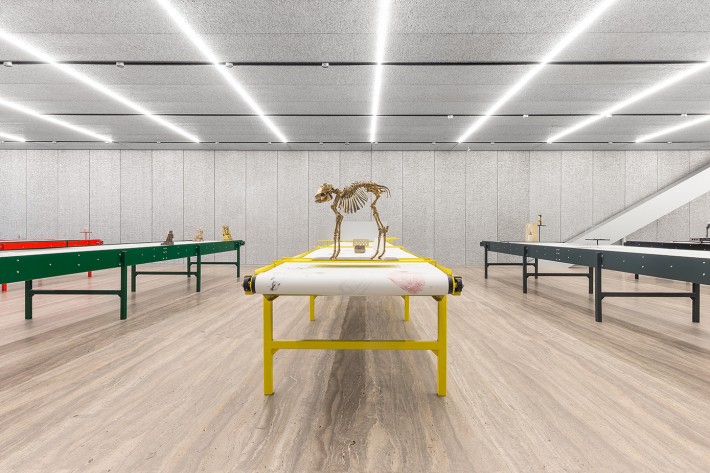
Goshka Macuga in collaboration with Patrick Tresset, Before the Beginning and After the End, 2016. In the foreground: Sherrie Levine, False God, 2007.
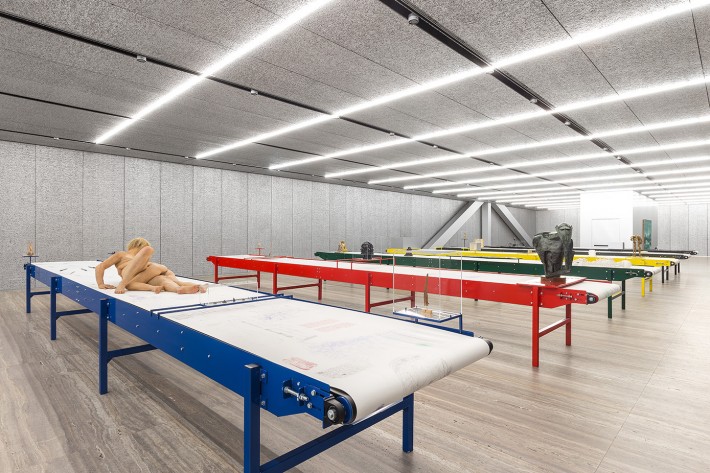
Goshka Macuga in collaboration with Patrick Tresset, Before the Beginning and After the End, 2016.
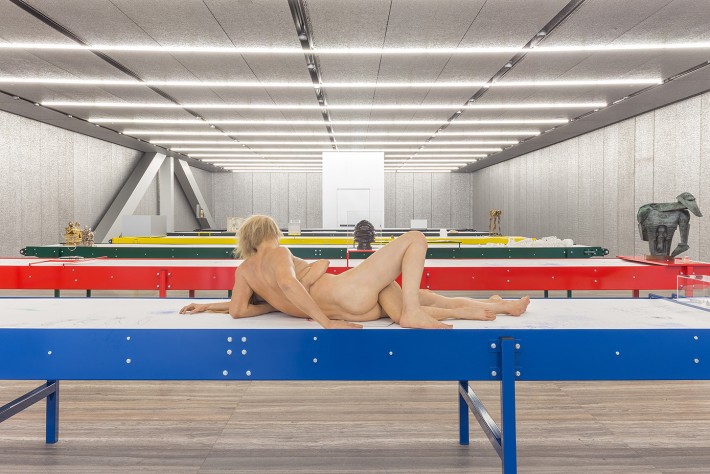
Goshka Macuga in collaboration with Patrick Tresset, Before the Beginning and After the End, 2016. In the foreground: John De Andrea, Arden Anderson and Norma Murphy, 1972.
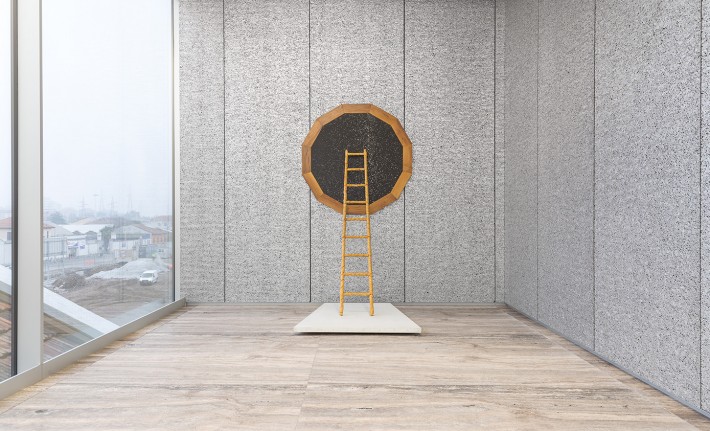
Claudio Parmiggiani, La Salita della memoria, 1976.
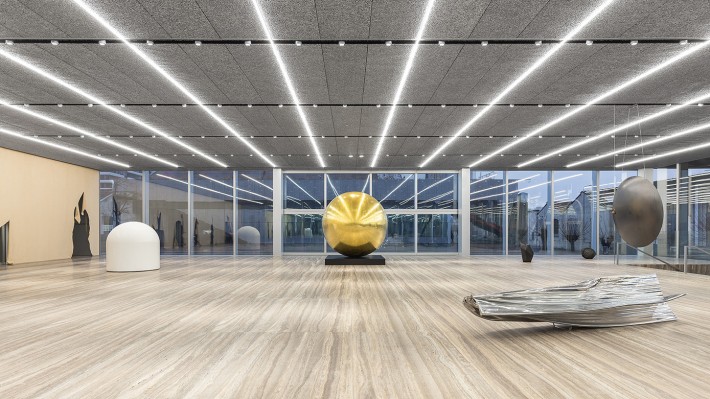
From left to right: Goshka Macuga, “Negotiation sites” after Saburo Murakami, 2016; Robert Breer, Float, 1970 (2000); James Lee Byars, The Golden Sphere, 1992; Thomas Heatherwick, Extrusion, 2009. Sullo sfondo / In the background: Eliseo Mattiacci, Colpo di gong, 1993; Alberto Giacometti, Cubo, 1934; Lucio Fontana, Concetto spaziale. Natura, 1982.
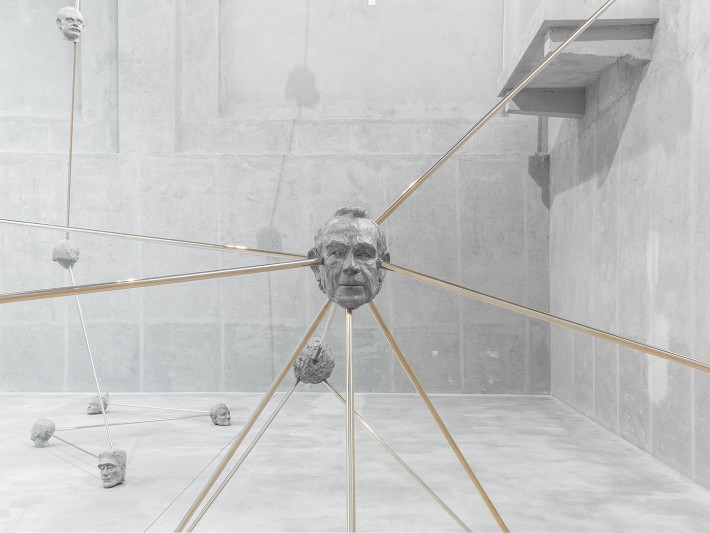
Goshka Macuga, International Institute of Intellectual Co-operation, Configuration 6, Humanity’s Survival: Jared Diamond, Jean-François Lyotard, Francis Bacon, Friedrich Nietzsche, Paul Crutzen, Nick Bostrum, HP Lovecraft, Michel Foucault, 2015.
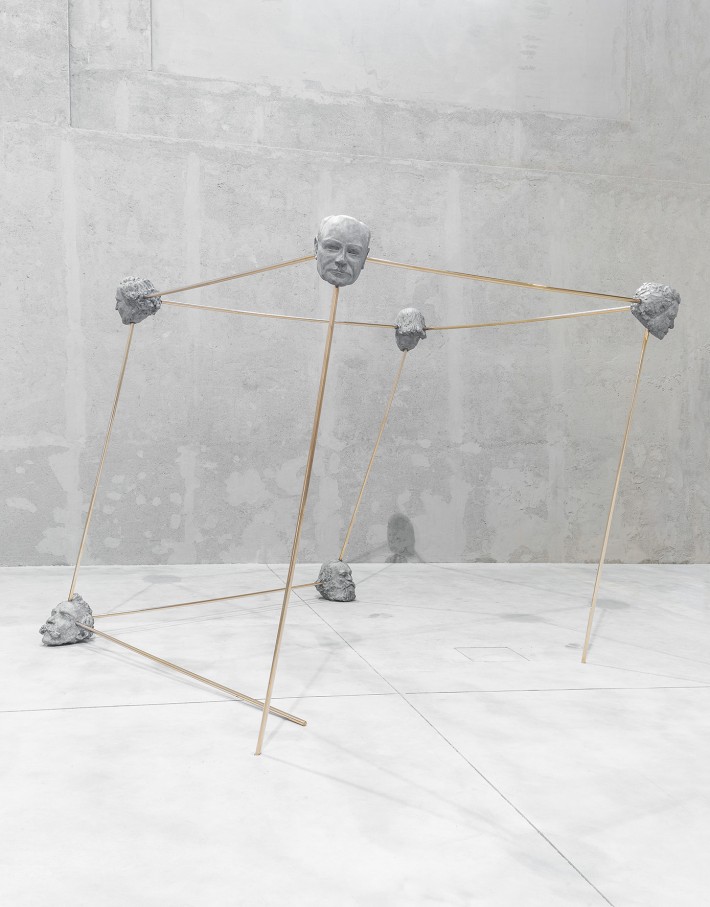
Detail of: Goshka Macuga, International Institute of Intellectual Co-operation, Configuration 12, Time’s Arrow: Alain Badiou, Ibn Khaldun, Kanak Man, Albert Einstein, 2015. In the background: Goshka Macuga, International Institute of Intellectual Co-operation, Configuration 10, End of History: Edward Snowden, Pussy Riot, Slavoj Zizek, Joe Stack, Aaron Swartz, Jim Jones, 2015.
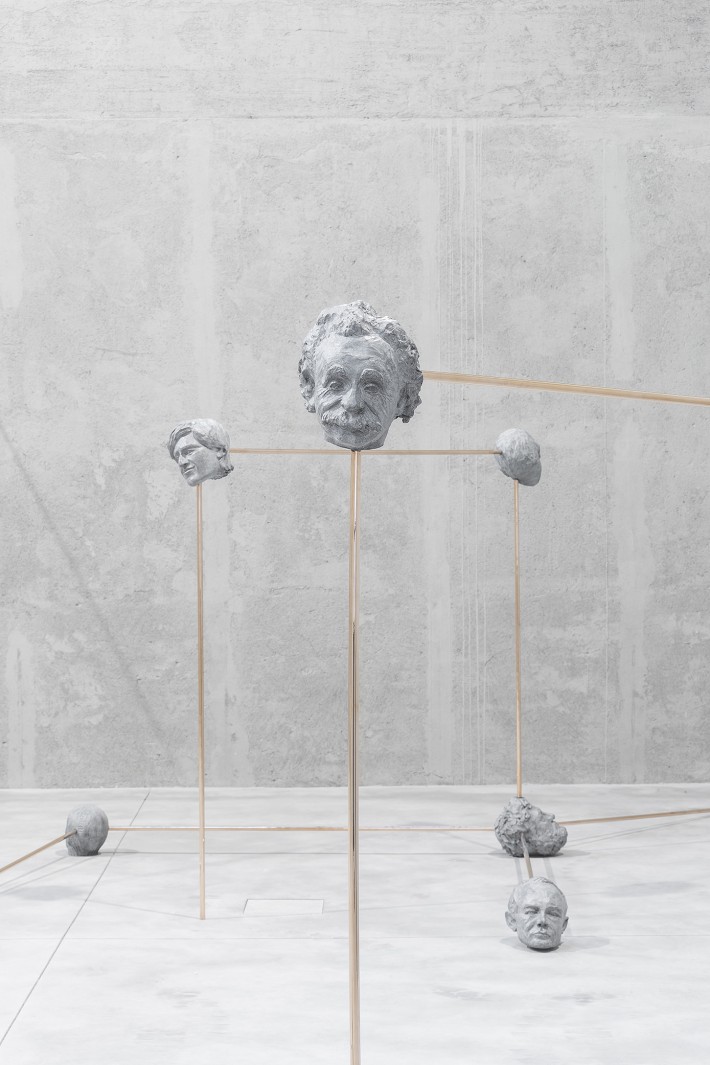
Detail of: Goshka Macuga, International Institute of Intellectual Co-operation, Configuration 6, Humanity’s Survival: Jared Diamond, Jean-François Lyotard, Francis Bacon, Friedrich Nietzsche, Paul Crutzen, Nick Bostrum, HP Lovecraft, Michel Foucault, 2015. In the background: Goshka Macuga, International Institute of Intellectual Co-operation, Configuration 7, Transhumanism: Donna Haraway, Giovanni Pico Della Mandola, Julian Huxley, Aby Warburg, Mary Shelley, Monster of Frankenstein, Ray Kurweil, Ronald Bailey, Francis Fukuyama, 2015.
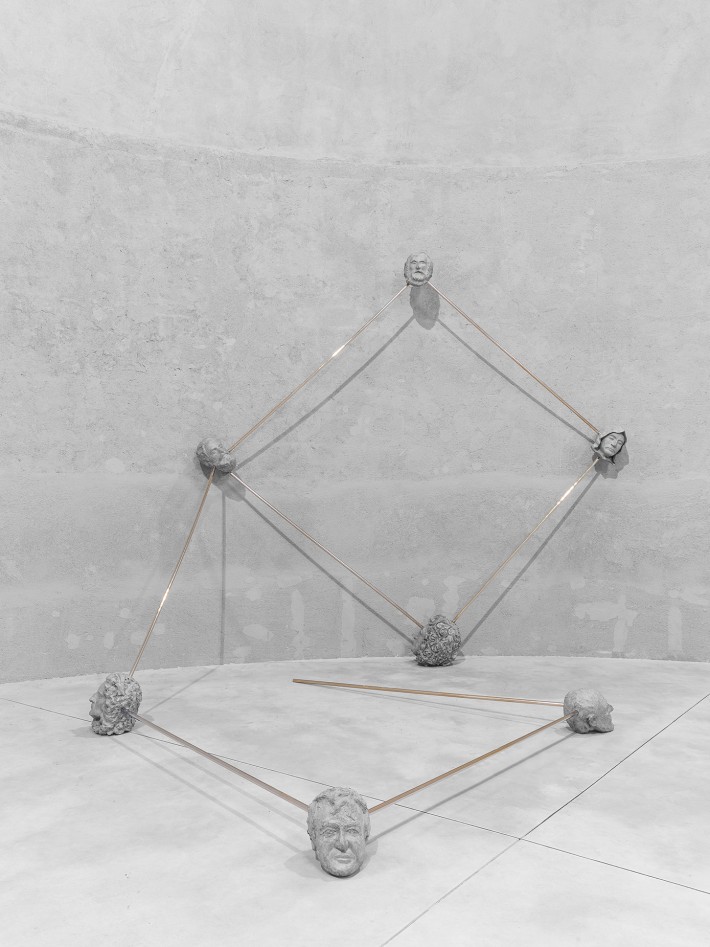
Goshka Macuga, International Institute of Intellectual Co-operation, Configuration 13, End of Time: Ramon Llull, Giordano Bruno, Gottfried Leibniz, St. Augustine, Isaac Newton, Carlo Rovelli, Julian Barbour, 2015.
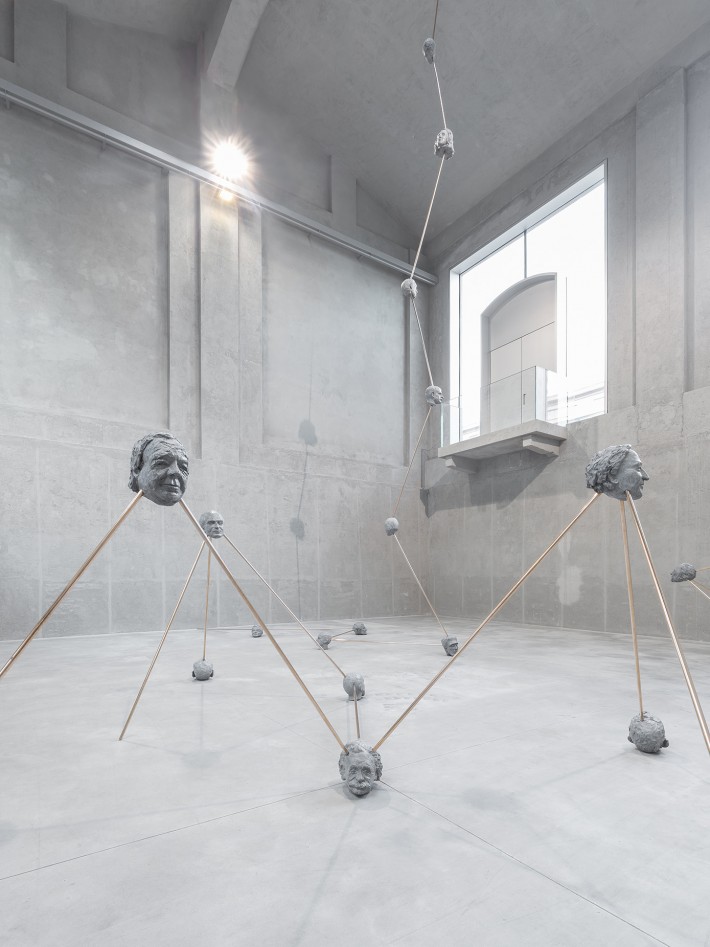
Goshka Macuga, International Institute of Intellectual Co-operation, Configuration 8, Human Destructive Spirit: Wolfgang Pauli, Carl Jung, Sigmund Freud, Oe Kenzaburo, Noam Chomsky, Albert Einstein, Ray Bradbury, Martin Luther King, Rabindranath Tagore, 2015. Goshka Macuga, International Institute of Intellectual Co-operation, Configuration 7, Transhumanism: Donna Haraway, Giovanni Pico Della Mandola, Julian Huxley, Aby Warburg, Mary Shelley, Monster of Frankenstein, Ray
Kurweil, Ronald Bailey, Francis Fukuyama, 2015.